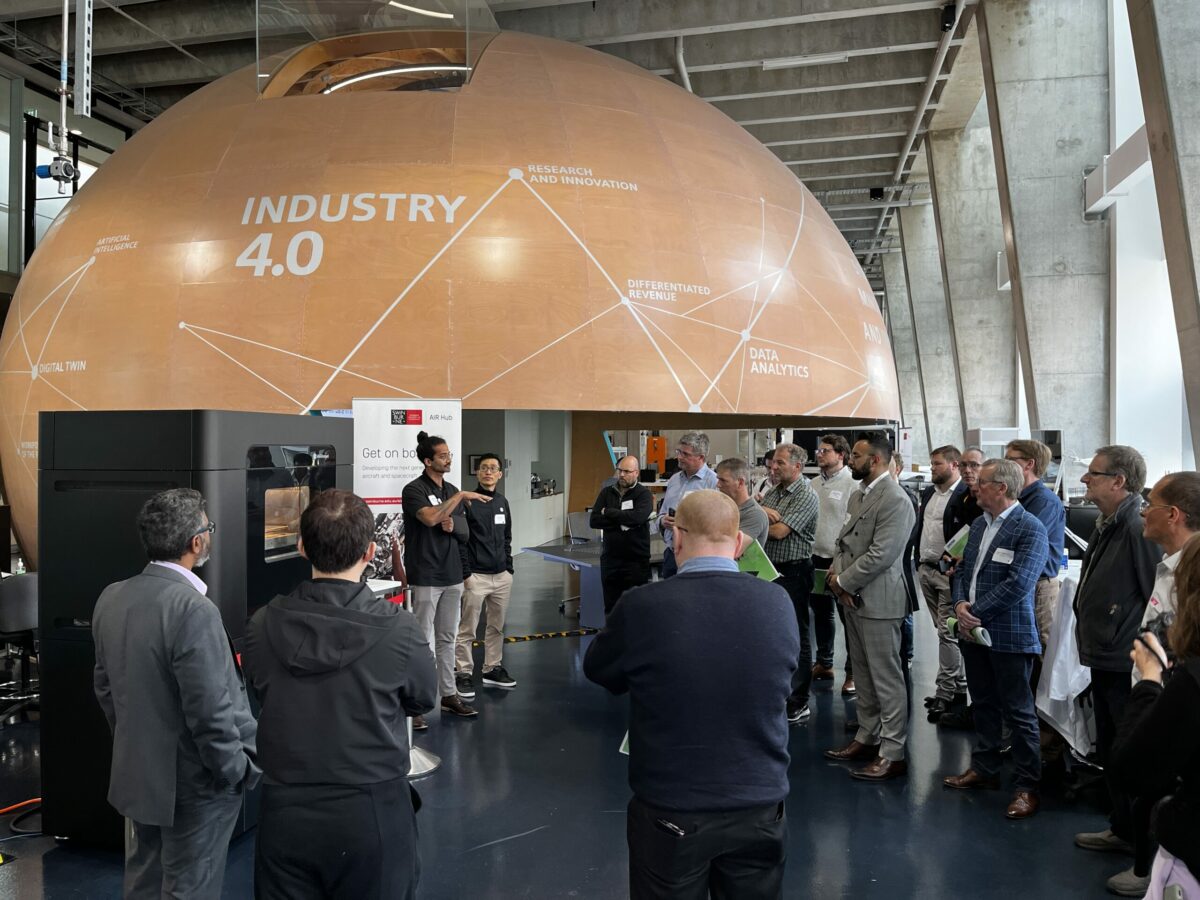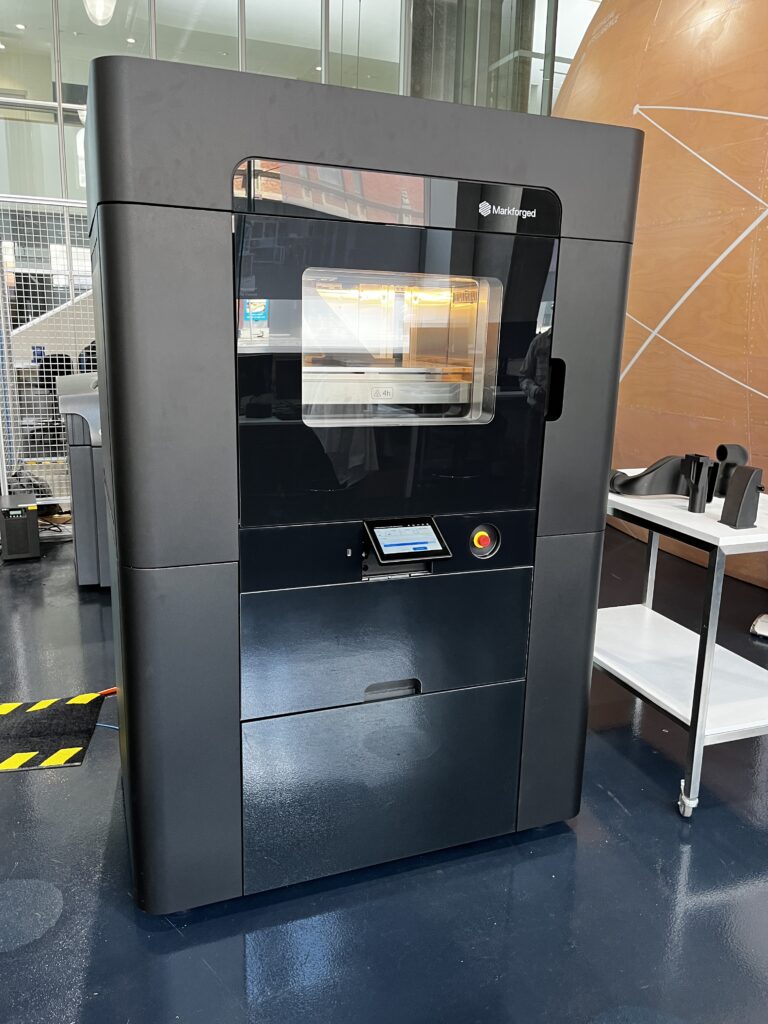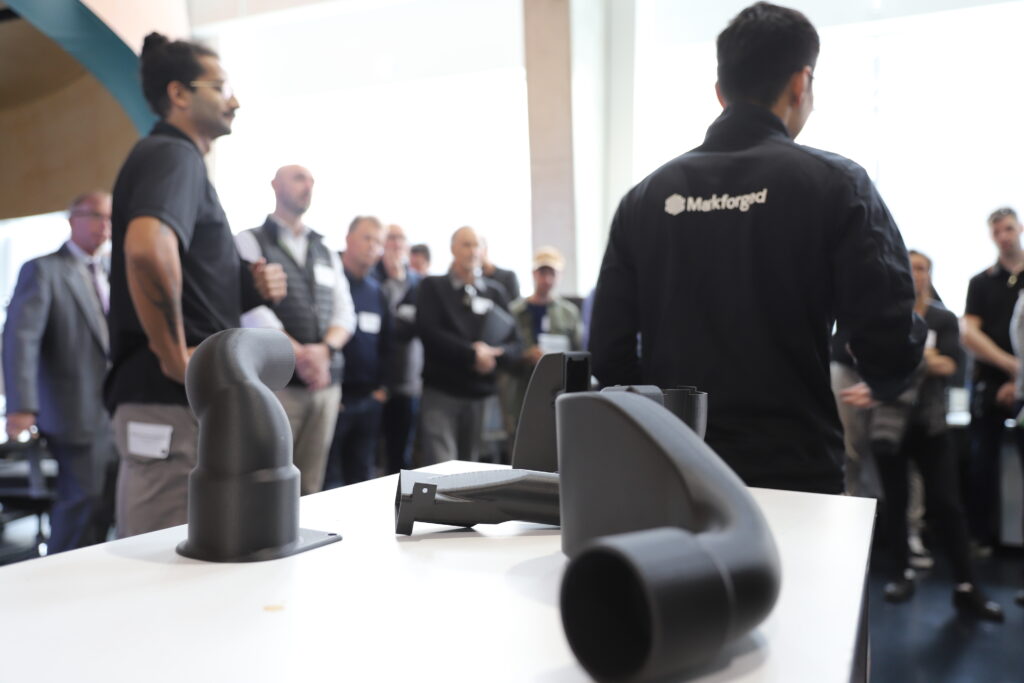Markforged launch FX20 composite 3D printer’s national roadshow at Factory of the Future

By William Poole
Swinburne University of Technology’s Factory of the Future was the site for Markforged’s Australian launch of the FX20, its groundbreaking new composite 3D printer, on October 25.
The function marked the start of a nationwide roadshow for the FX20, with Markforged staging additional events in Melbourne, Perth and Sydney.
The Factory of the Future, located in Melbourne and the site of the initial launch, is a facility on Swinburne’s Hawthorne campus that enables manufacturers to develop digital strategies and embrace Industry 4.0.
Despite its cross-country tour, the printer installed at Hawthorne will be the only FX20 in Australia openly available to industry for use in research & development.

The only FX20 available for open industry use will be located at the Factory of the Future, at Swinburne University.
Designed primarily for manufacturing high-strength parts in sectors such as aerospace, defence, automotive and energy, the FX20 represents a major advance for Markforged. Incorporating the company’s Digital Forge additive manufacturing platform, it can print builds nearly five times larger than Markforged’s existing line of composite printers, and up to eight times as fast. Despite its large volume – 525mm by 400mm by 400mm – the FX20 can also produce extremely small components, with intricate detailing, complex internal structures and an impressive surface finish.
Another key feature is the machine’s heated build chamber, capable of maintaining temperatures up to 200°C, allowing it to print flame-retardant, high-performance thermoplastic material. While well-suited to producing end-use components for demanding industries, the FX20 also offers possibilities on the factory floor, printing jigs and fixtures with a strength and precision to match more traditional manufacturing processes, but more efficiently.
“The FX20 is a beast of a machine, enabling the robust production of lightweight, advanced composite parts,” said Shai Terem, President and CEO of Markforged.
“Our customers will be able to count on Markforged for production of the end-use, mission-critical parts that are required to overcome the limitations of traditional manufacturing. This builds resilient and sustainable supply chains that extend directly to the point-of-need.”
Swinburne’s Aerostructures Innovation Research Hub (AIR Hub) will use the FX20 printer to support new aerospace development and assist the sector’s growth in Australia. AIR Hub Director Dr. Adriano Di Pietro was among the speakers at the launch event.

The new printer can make parts eight times as fast as Markforged’s current line of 3D composite printers.
“This state-of-the-art printer will be a game-changer for Australian businesses,” said Di Pietro.
“AIR Hub is bringing industry together with cutting-edge technology to support the growth of aviation and aerospace in Australia. We’re proud to be hosting Australia’s first openly accessible FX20 in Swinburne’s Factory of the Future.”
Along with Terem and Di Pietro, the Swinburne event saw presentations from Michael Sharpe, National Director for Industry at the Advanced Manufacturing Growth Centre (AMGC), and Professor Tracy Dong Ruan, Chair of Swinburne’s Department of Mechanical and Product Design Engineering (MPDE). Guests also had a tour of the Factory of the Future
Throughout the event, a consistent talking point was the issue of supply chain vulnerability and the potential for additive manufacturing to mitigate the sort of disruption we’ve seen in recent years. For Terem, this is a key focus of Markforged’s strategy going forward.
“Our mission is to bring production to the point of need, and we’re doing it because we believe manufacturing needs to be more resilient and more flexible,” said Terem. “The way to do it, in our view, is to add more capabilities to the Digital Forge platform. So what you’re going to see from us is new solutions, new printers, new materials, new software, helping manufacturers to be less dependent on supply chains and have the ability to do more in-house.”
@aumanufacturing Sections
Analysis and Commentary Awards Defence Manufacturing News Podcast Technology Videos






